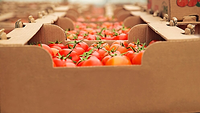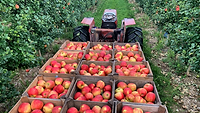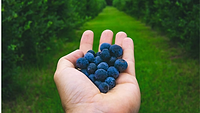Researchers Studying Efficacy of Sanitizers, Wash Practices Used at Peach Packinghouses

Image credit: LuAnn Hunt via Unsplash
Ongoing research funded by the Center for Produce Safety (CPS) aims to fill knowledge gaps about the efficacy of sanitizers and wash techniques used on peaches. Although packinghouses regularly run peaches over a spray bar brush bed to apply sanitizer via water, little data is available about sanitizer efficacy, contact times, or treatment durations.
The project is led by Meijun Zhu, Ph.D. from Washington State University, who saw the need to investigate wash systems after a 2020 foodborne illness outbreak linked to peaches contaminated by Salmonella, which was possibly introduced to the fruit by nearby animal agriculture. Dr. Zhu is combining laboratory studies and packinghouse trials to produce science-based data on sanitation efficacy for the industry to use to develop preventive control programs.
In a packinghouse, peaches are typically washed, defuzzed, and then moved to a brush bed where overhead nozzles spray sanitizer-treated water. Research on fruits with fuzz like peaches is more difficult than on smooth-skinned fruit. Therefore, the researchers believe that if they are able to identify a sanitizer program that works on peaches, it will probably be equally or more effective on smooth-skinned stone fruit.
Dr. Zhu will use peaches sent weekly from commercial California packinghouses to lab in Washington. She will inoculate them with bacteria, then test the efficacy of the most common sanitizer, chlorine, as well as various other food-grade antimicrobials. As part of her work, Dr. Zhu will also investigate the effects of different sanitizer concentrations and contact times.
Conducting the same tests on peaches from weekly shipments throughout the season should account for any potential varietal responses, as the fruit mature at different points during the summer. The peaches will be inoculated with a nonpathogenic strain, Enterococcus faecium NRRL B-2354, as a surrogate for Salmonella and Listeria monocytogenes.
The work done in the lab allows the researchers to control concentrations and contact time, however, it is unable to mimic the dynamic processing flow seen in real-world packing facilities. Dr. Zhu’s goal is to collect as much laboratory data as possible in the 2023 season to prepare for three large-scale trials planned at California packinghouses in 2024.
Looking for a reprint of this article?
From high-res PDFs to custom plaques, order your copy today!






